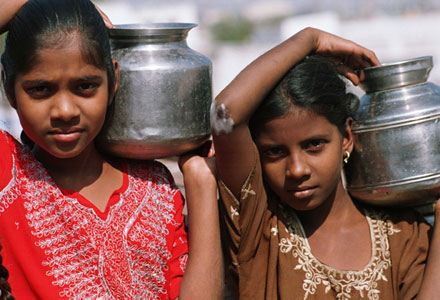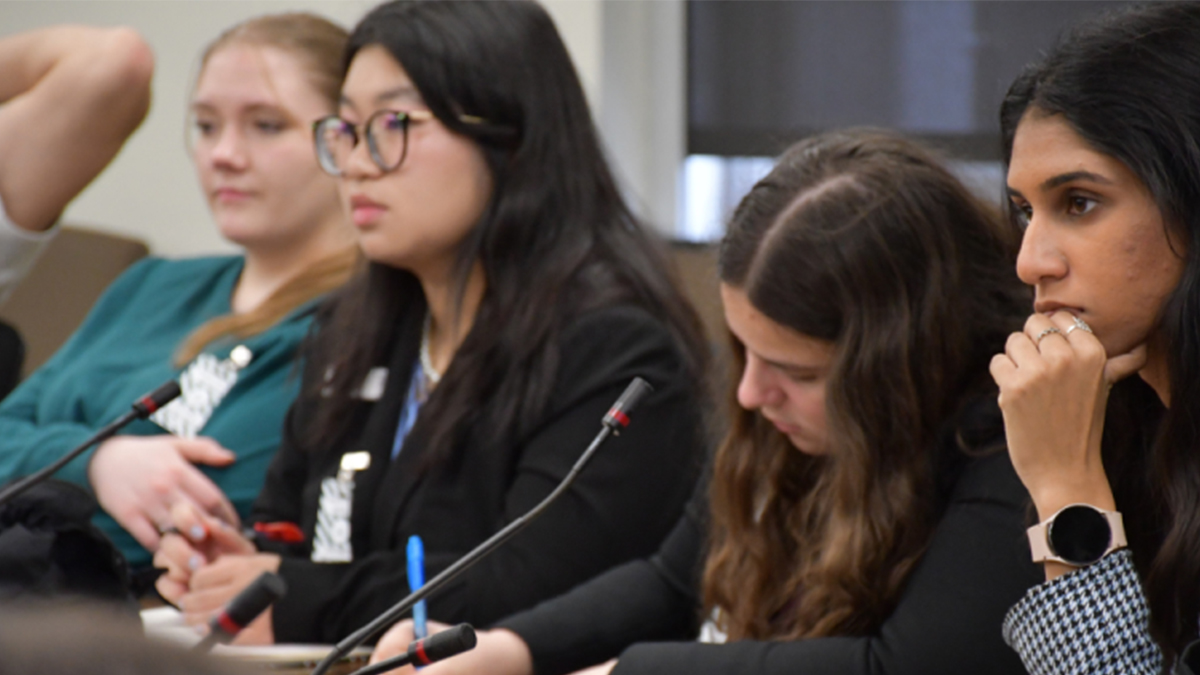A defining challenge of the 21st century
Carolina's Water Institute is applying innovative problem solving from both science and policy perspectives to find ways to provide safe water to people around the world.

For three years, The Water Institute at UNC-Chapel Hill has been working to make safe water and sanitation a reality for people around the world. In honor of World Water Day on March 22, we wanted to share some of the highlights of the institute’s work.
- Researchers at the institute have better estimated the number of people worldwide who don’t have access to safe water, pushing the estimate to 28 percent of the world’s population, far higher than experts previously thought.
- The institute is working with practitioners around the globe, helping them to improve the results of their drinking water, sanitation and hygiene projects.
- Researchers at the institute have developed a ranking system by state and county in the United States to show the preparedness and vulnerability of drinking water systems to climate-related hazards, such as flooding or droughts.
- With three conferences annually, the Water Institute is bringing people together from diverse sectors and disciplines to tackle critical issues in water and public health.
Water is a defining challenge of the 21st Century and it requires innovative problem solving from both science and policy perspectives, says Jamie Bartram, the director of The Water Institute.
“Water represents one of the great development opportunities of our time, impacting health, agriculture, security, the economy and the environment,” says Bartram, the Don and Jennifer Holzworth Distinguished Professor in the environmental sciences and engineering department in UNC’s Gillings School of Global Pubic Health. “Because of the expertise that we have at UNC and the focus the University has placed on this issue, Carolina is well positioned to make a difference locally and globally.”
UNC chose water as the focus of its first academic theme, Water in our World.
Worldwide influence
Last year, Bartram and his team published a study that estimated that 28 percent of the world’s population, or 1.8 billion people, had used unsafe water in 2010. That estimate was one billion people more than the estimate by UNICEF and the World Health Organization. The UNICEF/WHO numbers were based on access to what is categorized as improved water sources. Bartram says that in many parts of the world, water from improved sources, such as piped water or public taps, is likely to be microbiologically or chemically contaminated, either at the source or by the time people drink it.
The institute is also working directly with partners to help bring safe drinking water to some of the poorest people in the world. For example, through a $1.5 million grant from the Conrad N. Hilton Foundation, the Water Institute is helping Hilton grantees in West Africa, India and Mexico measure the progress of their water, sanitation and hygiene programs and advise them on strategies that will deliver the greatest impact.
When researchers at the Water Institute saw there was little data available on the outcomes of previous investments in programs that aim to improve access to drinking water, sanitation and hygiene, they developed a standard set of core indicators and a monitoring framework that groups can use to track their outcomes. The institute also launched a Virtual Learning Center for practitioners in the field to share ideas, experiences and lessons learned.
The institute’s researchers also have ranked drinking water systems by state and county in the United States according to their vulnerability to extreme weather events and climate change. The data allow states and municipalities to reduce their risk and to target future investment in water infrastructure.
Collaboration
One of the main aims of The Water Institute is to bring people together from diverse sectors and fields and from both science and policy perspectives. In 2010, the institute launched the “Water and Health: Where Science Meets Policy” conference. In 2013, more than 500 researchers, practitioners, policy-makers, students and entrepreneurs from 45 countries attended the event.
In March, the institute launched the first “Nexus 2014: Water, Food, Climate and Energy Conference”, which highlighted the need to shift away from current “silo thinking” about food, water, climate or energy individually to a “nexus approach,” which takes into account how all of these issues impact each other. And, in May, the institute will host its first “Water Microbiology Conference” that will look at water contaminants, human exposure, methods to analyze the contaminants and ways to manage and treat unsafe water.
The Water Institute is also engaging in new partnerships. Two years ago on World Water Day, The Water Institute helped launch the U.S. Water Partnership, announced by then-U.S. Secretary of State Hillary Clinton. The partnership is a public-private group formed to share U.S. knowledge, leverage and mobilize resources and facilitate cross-sector partnerships to find solutions to global water accessibility challenges, especially in the developing world.




